Final Report : Adaptive Level-Of-Detail Isocontouring
Bong-Soo Sohn
I. Problem Specification
The primary goal is to design and implement a dynamic and view-dependent
algorithm for extracting multiresolution isosurface in time-varying fields.
Electronic density maps and electrostatic potentials of molecules are
the main data to analyze. Especially, molecular simulation program such as
NAMD generates a sequence of molecular structure which can be converted
into time-varying volumes. Since isosurface extracted from those data
usually involves huge amount of triangles, view-dependent and multiresolution
techiques are useful for saving both isosurface extraction and rendering time.
II. Input/Output and Implemented Features
- Input :
The input is electronic density maps and electrostatic potentials
computed based on PDB files. A sequence of PDB files generated by
molecular simulation such as NAMD provide time-varying dataset.
These datasets are provided by Shubing Wang and Yufeng Zhang.
- Implemented Features :
This work is not completed but the implemented features so far can be
summarized as following.
- Octree Construction : to hierarchically partition the volume, octree i
s constructed. On each node, error norm and refinement information is stored.
The sum of square error is used as an error metric.
- adaptive mesh refinement while guaranteeing function continuity when
traversing octree node adaptively, the underlying scalar fields are not continu
ous. To fix it to be continuous, we guaranteed function continuity in the bounda
ry of cells of different level by adjusting function values.

- Crack Removal : even if the functions on the adaptive mesh are continuous, the extracted isosurface can have a crack as you can see in the following figure. We fixed the crack by replacing coarse triangles by fans of triangles.

- Adaptive LOD Isocontouring : When given isovalue, and error tolerance value as an input, our program generates crack-free isosurface with smaller triangles.

This figure represents isosurface with multiple level of detail with no crack.
- output :
We applied the LOD isocontouring to electronic density map and electrostatic
potentials of several molecules (Anthrax Toxin(1ACC), 1CNR). The resulting figur
es are as following. ( High Resolution Pictures )
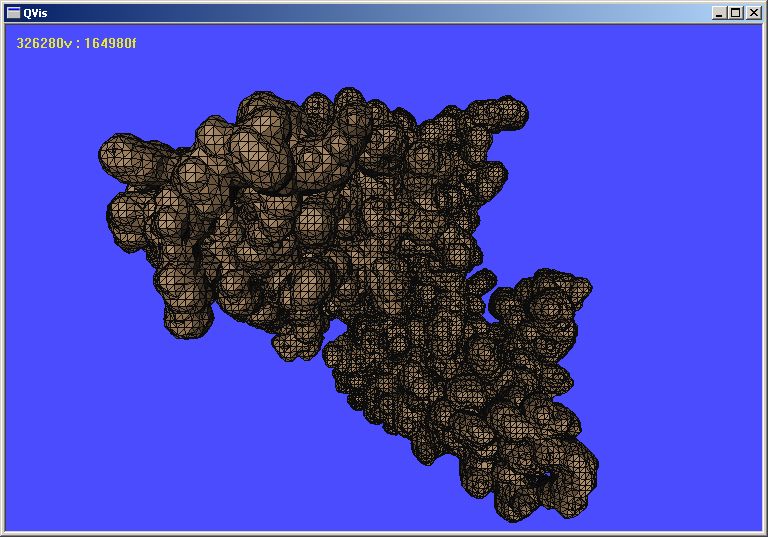



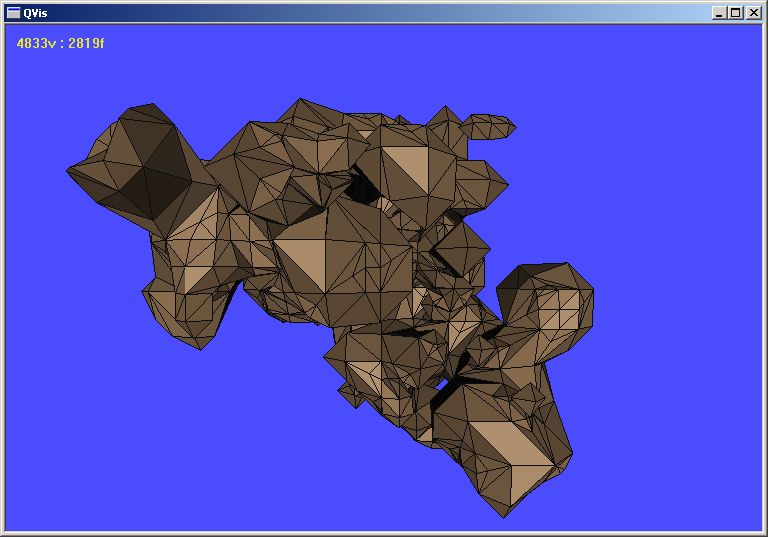

- Comparison :
We compare the quality of simplification by setting the number of face as
same and looking at the resulting mesh figures. The polygonal simplification
was done using Qslim implemented by Michael Garland.
( High Resolution Pictures )
Follwoing Images are generated from Qslim.


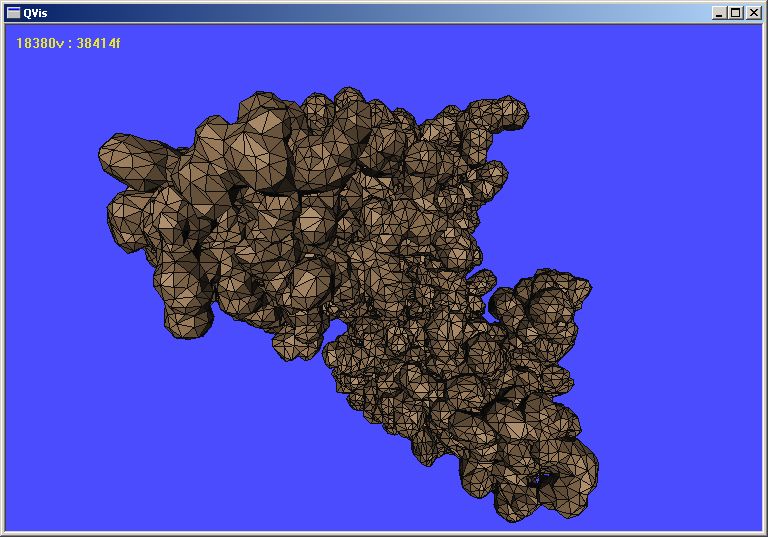
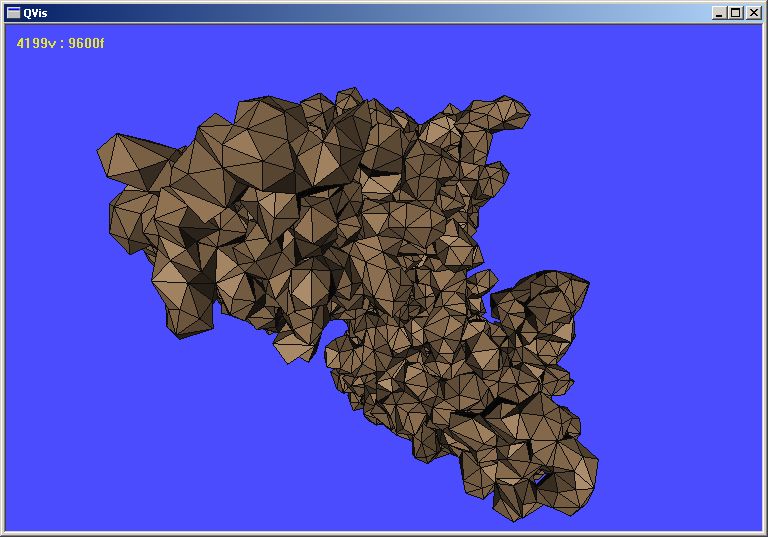

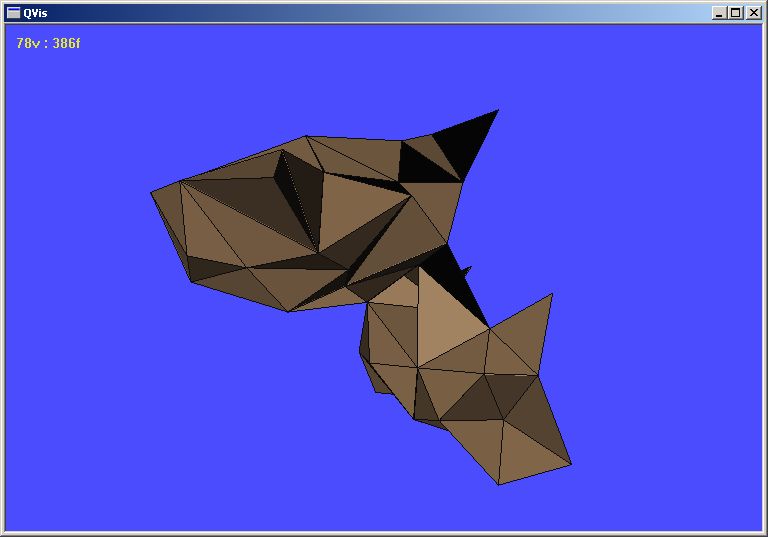
III. Lessons Learned
-
Isosurface usually consists of large number of triangles and the time
for extraction and rendering of isosurface is not fast enough for
interactive visualization applications. Therefore multiresolution
techniques are adopted by performing adaptive mesh refinement(AMR)
and isocontouring from the AMR.
-
Crack problem occurs when adaptive mesh refinement on the volume with
rectilinear grid. Crack removal is a fundamental for adaptive LOD isocontouring.
- Octree can hierarchically partitions the volume and can perform well
in supporting multiresolution and view-dependent techinques.
- The resulting simplified isosurfaces generated by LOD isocontouring and
typical mesh simplification algorithms are almost similiar.
IV. Reference
R. Westermann et al., Real-time Exploration of Regular Volume Data by Adaptive Reconstruction of Isosurfaces
R. Shekhar, Octree-Based Decimation of Marching Cubes Surfaces














